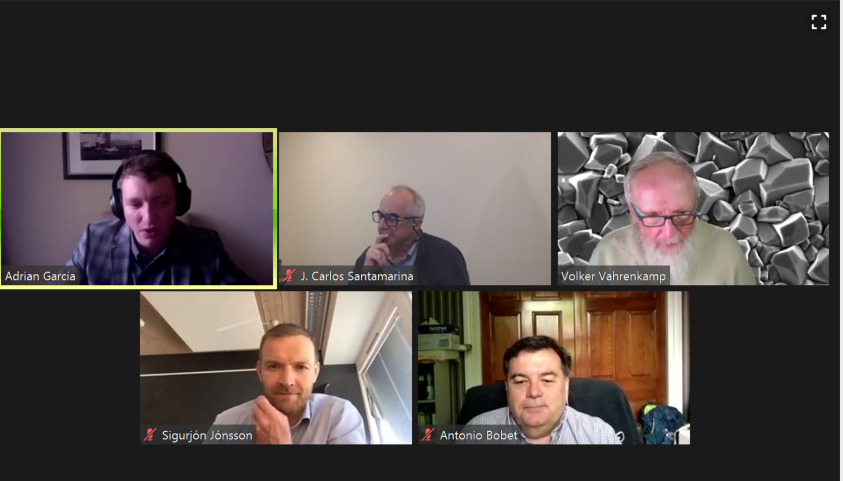09 June, 2020
Congratulations to EGEL group member, Adrian Garcia who successfully defended his Ph.D thesis, Thermo-Hydro-Mechanically Coupled Processes in Fractured Rocks on June 4. Adrian is supervised by Professor J. Carlos Santamarina. His Committee members included Dr. Voker Vahrenkamp (chair), Dr. Sigurjon Jonsson, Dr. Antonio Bobet (Purdue University, USA) and Dr. Santamarina.
Abstract: The global energy demand is a critical challenge for this generation. Most of the world's energy resources reside underground. Fractured rocks are ubiquitous, and their properties are strongly affected by the 3D state-of-stress, temperature, and pore fluid pressure. Energy geo-engineering solutions that involve fractured rocks must ultimately address the diversification of energy resources, improvement in energy recovery efficiency, and development of safe and long-lasting waste disposal capabilities (from nuclear waste to carbon geological storage). Fracture morphology depends on heterogeneity and fabric, stress/deformation boundaries, and rock mechanical properties. The discrete element method can model the complex micromechanics of rock failure. DEM results in this thesis indicate that the brittle-to-ductile transition depends on the extent of local tensile failures that occurs before the onset of shear failure. Results also show that a small degree of exhumation damage reduces the subsequently measured rock strength under low confinement. The study of mechanically-coupled geophysical processes in highly fractured rock masses necessitates large specimens to achieve effective media conditions during elastic wave propagation. The development of a novel large-scale true triaxial loading apparatus enables P-wave velocity measurements under anisotropic stress conditions (up to σ' = 3 MPa) on large fractured rock masses. The true triaxial load-frame also facilitated the study of fluid flow and fracture opening to explore the competing influences of stress and rock mass fabric during hydraulic fracturing. Even under extreme load anisotropy, the fluid invades and opens all fracture sets near the injection point. Fracture intersections act as flow conduits and feed the invading fluid into the adjacent fractures. Thermal contact resistance impedes heat flow between neighboring rock blocks in fractured rocks. Contact resistance manifests as a discontinuous thermal gradient. It strongly influences the rock effective thermal conductivity and makes it sensitive to water saturation, stress, and the presence of gouge material. Finally, we conduct detailed thermal conductivity measurements on sand-silt gouge mixtures and propose physics-inspired models that accurately predict the thermal conductivity and mass density of dry and wet specimens as a function of stress and fines content.
